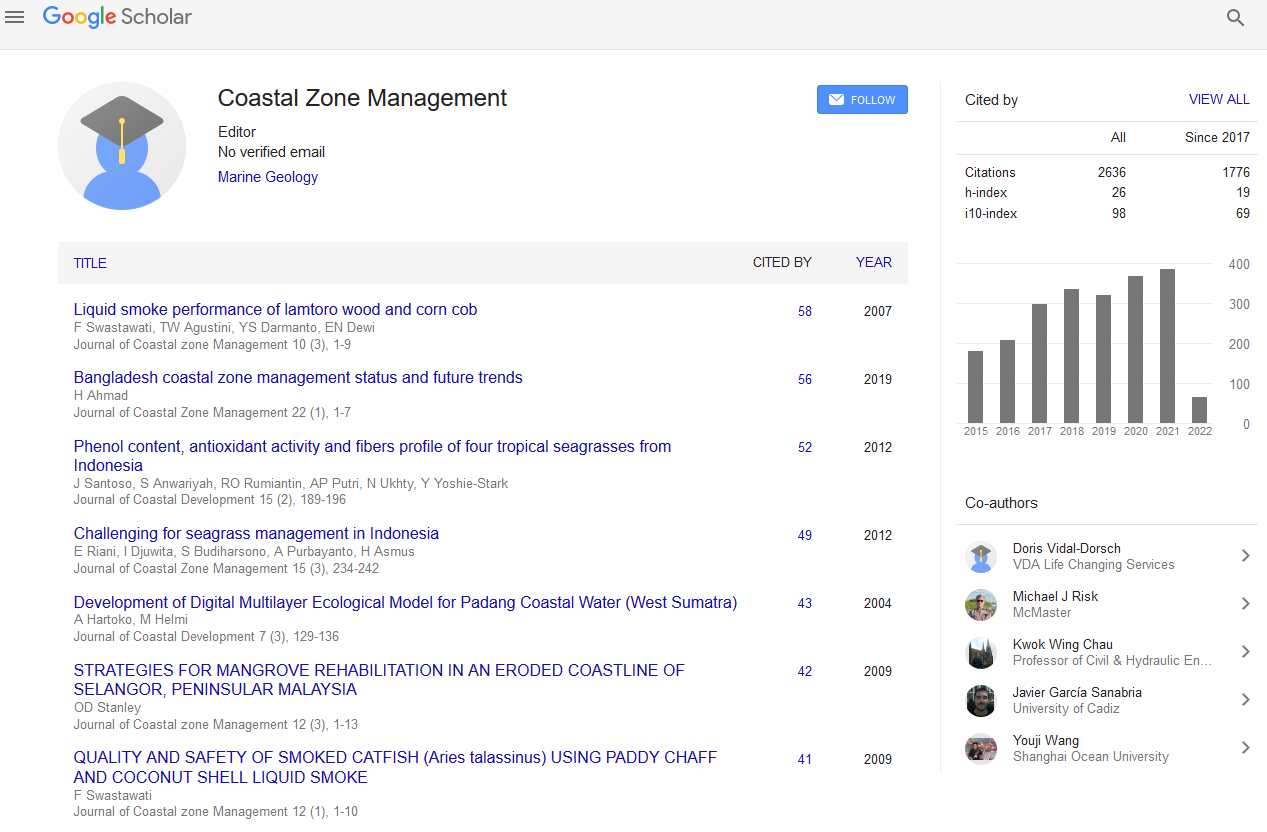Indexed In
- SafetyLit
- RefSeek
- Hamdard University
- EBSCO A-Z
- OCLC- WorldCat
- Publons
Useful Links
Share This Page
Journal Flyer

Open Access Journals
- Agri and Aquaculture
- Biochemistry
- Bioinformatics & Systems Biology
- Business & Management
- Chemistry
- Clinical Sciences
- Engineering
- Food & Nutrition
- General Science
- Genetics & Molecular Biology
- Immunology & Microbiology
- Medical Sciences
- Neuroscience & Psychology
- Nursing & Health Care
- Pharmaceutical Sciences
Abstract
An Investigation on the Non Specific Immune System (Mucosal) of Tilapia (Oreochromis mosambicus) based on Histochemical Analyzes
Ruswahyuni) , Pujiono Wahyu Purnomo and Cahyono Purbomartono
Mucus is one of a non-specific defense mechanism, since this is the first element of aquatic organisms,
which contact physically, chemically, or biologically with the environment. The mucus self defense
mechanism investigation was carried out on fresh water fish tilapia (Oreochromis mosambicus). Eight
(8) types of lectine were used to examine residual carbohydrate-based protein from mucous component
based on histological and histochemical observation method. The review was directed as basic
information for detail review about physiology adaptation aspects.
The results showed that mucous in goblet cells from palatal, gills primary lamella, ecophagus
and skin reacted with WGA (Wheat Germ Aglutinin) lectine. In another part, mucous from the goblet
cells in palatal and esophagus cells reacted with PNA (Peanut Aglutinin). Based on these results,
therefore, it can be concluded that mucous from goblet cells in esophagus contains residual of N-asetil
glucosamine and/or similar acid β-galactose and α-N-acetyl galactomine. Mucous from goblet cell in
palatal contains residual of X-acetyl glucosamine and/or sialat acid and galactose. While mucous in
the gills lamella contains carbohydrate residual, namely N-acetyl glucosamine and/or sialat acid.

